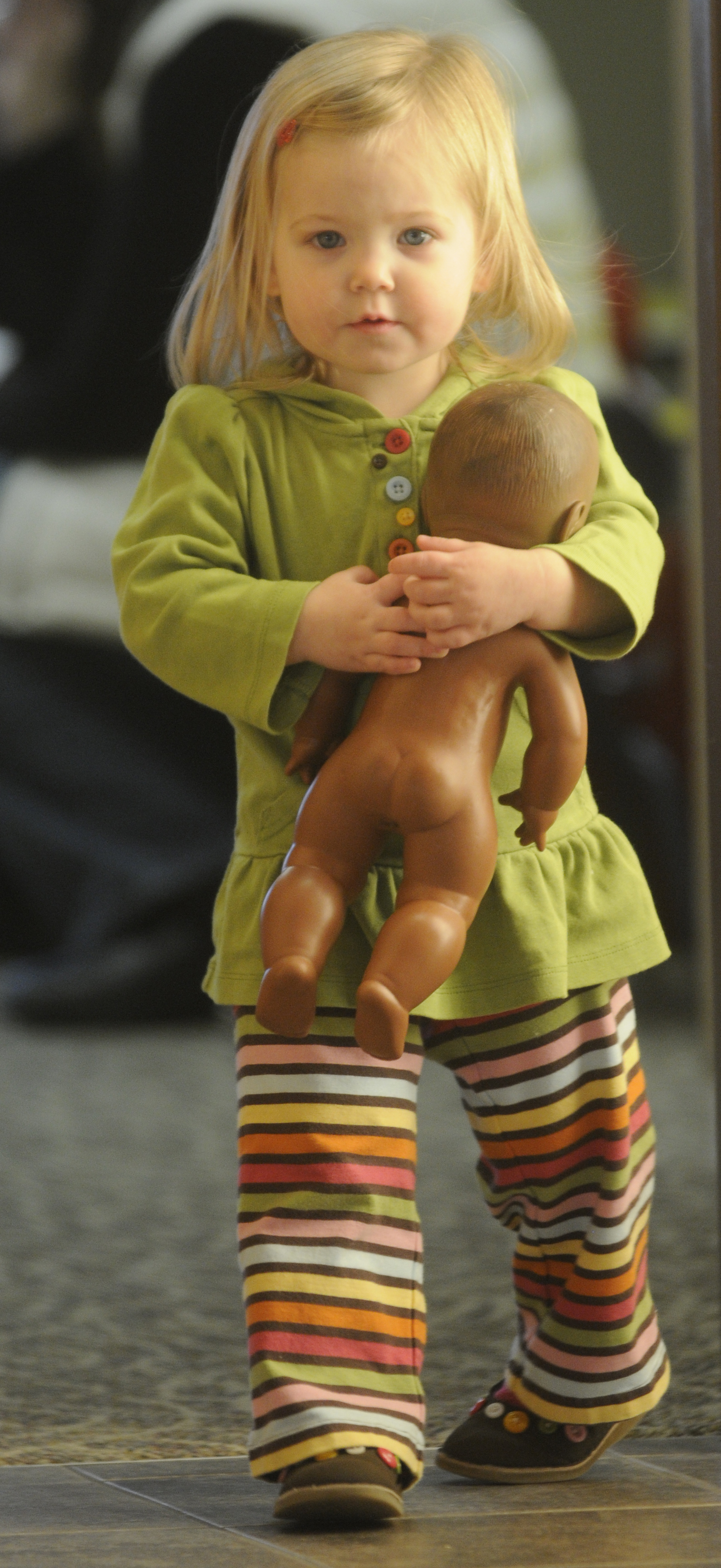Time-tested toys: Classics rekindle childhood memories

Hannah Todd, 20-months-old, plays with a doll earlier this month during a MOMs group meeting at First United Methodist Church. Classic toys like dolls can capture the imagination of many generations of children at play.

Nick Krug/Journal-World Photo

Nick Krug/Journal-World Photo
Chances are no one was beating down retail doors this holiday season — or for that matter stood in line at all — to buy a stick.
But when members of the MOMS Club of Lawrence-North were asked to rattle off toys that stood the test of time, sticks were right up there with the Etch-A-Sketch, Barbie, Tonka Truck and the always reliable cardboard box.
“Everywhere we go, they’ll find sticks,” says Julie Kelemen, mother of boys ages 2 and 5. “They dig with it, they draw with it, they do battle with it — of course, that one’s not my preference.”
Almost as old as dirt, the stick gained long overdue recognition this year when it was inducted into the National Toy Hall of Fame for its ability to entertain children for centuries.
Of course, most children wouldn’t be thrilled to find a neatly wrapped stick under the Christmas tree. But its continued popularity in a world filled with singing, flashing, dashing, battery-eating toys points to the simple truth that sometimes it’s the least complicated objects that are best at entertaining children.
At least that’s what Pat Pisani, director of Hilltop Child Development Center, believes. The toys with the most staying power are those that are left open-ended so they can be used in different ways as the child grows, she says. It also helps if they are durable.
Wooden blocks, LEGO toys, kitchen sets, baby dolls and dress-up clothes have never faded from the childhood limelight.
“I think the issue with some of these newer toys, they are electronic and they do so many things, they tell you this or that, but the child doesn’t have the opportunity to do the thinking like they do with the older toys,” Pisani says.
Lynn Marotz, a Kansas University assistant professor of applied behavioral science, says over time children will return to the toys that can be manipulated, stimulate their curiosity and require decision making.
Of course, childhood development isn’t the only thing a parent — or grandparent — is thinking when they buy the same toy for their offspring that they played with as child.
Margaret Warner, owner of the Toy Store in downtown Lawrence, says the classics such as the Radio Flyer red wagon, Lincoln Logs and the Slinky bring with them a heavy case of nostalgia.
“The truth is they want to play with it again,” Warner says of parents.
Some of the store’s most popular sellers are the old-school humming tops, Tinkertoy, hand puppets, jacks and marbles.
“It’s what the business is built on. It’s all about the basics,” Warner says. “There are very little battery-operated, faddish, short-lifespan toys that have been around for decades.”
For the MOMS Club mothers, it’s no secret that parents buy the toys that they were fond of as children or ones that were on the wish list but never received.
Take Kendra Kuhlman, for instance. She’s hoping to pass on her collection of Barbies to her now 20-month-old daughter.
Half of the toys Diane Vigna’s 4-year-old son plays with are the same ones his father did. In fact, Vigna’s husband was on eBay earlier this month in search of a vintage Matchbox racetrack.
“He doesn’t like the new ones,” she says.
Marotz, who has written books on children’s health, safety and nutrition, likes the idea of parents recycling their old toys. But she cautions them to remember that the same safety standards weren’t in place a few decades ago. Parents need to watch out for lead paint and old plastics that can be sharp or become brittle over time.
Still, she says parents enjoy handing down their favorite toys so much because with them they pass along the ways in which they played.
She believes some of today’s toys are designed more to appeal to the parent than the child.
“The kids get really tired of it and always go back and get the old stuff again,” Marotz says.
And that might explain why — come Christmas time — children are often just as drawn to the wrapping paper and box as they are to the present itself. Unless, of course, that present were to be a stick.

